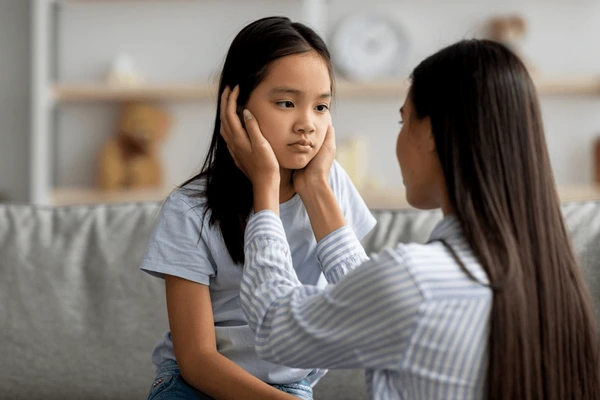Imagine this: your child comes home from school, throws their backpack down, and bursts into tears. You ask what’s wrong, but they can’t explain it. They’re not just tired. They’re overwhelmed. Frustrated. Maybe even ashamed that they don’t know how to process it all.
This is exactly the kind of moment that the Zones of Regulation was made for.
Created by occupational therapist and educator Leah Kuypers, the Zones of Regulation is a simple but powerful framework that helps children understand and manage their emotions. It’s been used in over 50 countries and thousands of classrooms, and now, more parents and caregivers are bringing it into their homes—and for good reason.
Let’s break it down in a way that actually makes sense, whether you’re a teacher with 30 students or a parent just trying to make it through dinner.
What Are the Zones?
At its core, the Zones of Regulation sorts emotions and states of alertness into four easy-to-remember color zones:
- Blue Zone: low energy emotions—like sadness, boredom, or tiredness.
- Green Zone: calm, focused, and ready to learn. This is the “ideal” zone.
- Yellow Zone: heightened alertness, but still in control. Think: excited, silly, nervous, or frustrated.
- Red Zone: intense emotions like anger, panic, or extreme elation. This is when a child might feel (or act) out of control.
None of these zones are “bad.” They’re all normal. What matters is helping children recognize which zone they’re in, understand why they’re there, and know what they can do about it.
Why It Works
Kids don’t naturally come with a user manual for their feelings (let’s be honest—neither do most adults). What Kuypers did was create a language for emotions that kids can understand and use. The Zones give them something to grab onto—a color, a feeling, a strategy.

Let’s say a student is bouncing off the walls in class after recess. Instead of saying, “Calm down!” a teacher trained in the Zones might say, “It looks like you’re in the Yellow Zone. Want to take a moment with the sensory box or grab your journal?”
Suddenly, the student isn’t being scolded—they’re being supported.
My First Real-Life “Zone” Moment
I remember using the Zones at home with my little cousin, who’s on the autism spectrum. He was upset because his game got deleted. He couldn’t say “I’m angry”—but when I showed him the Zones poster and asked what color he felt like, he pointed straight to red. That opened the door.
We breathed together. Then we brainstormed: What could help him move to green? He said, “Drawing Sonic.” That became his go-to reset. It wasn’t about fixing the game—it was about understanding his emotions and having tools to deal with them.
Teaching the Zones at Home
You don’t need fancy training to get started. In fact, one of the things I love about the Zones is how naturally they can be folded into daily life. Here are a few ideas:
1. Name Your Own Zone
Start modeling. “Ugh, I’m in the Blue Zone today—I didn’t sleep well. I think I need a walk.” Show kids that adults have emotions too and that it’s okay to talk about them.
2. Use Characters and Stories
Watch a movie or show together. Pause and ask, “What zone do you think this character is in?” Not only does this boost empathy, but it helps kids build awareness without pressure.
3. Create a Toolbox
Together, make a “Green Zone Toolbox.” It can include favorite music, a fidget toy, coloring supplies, or calming snacks. Let your child help build it—it gives them ownership.
4. Make It Visual
Post a Zones chart on the fridge or bedroom door. Let them move a magnet or clip to the zone they’re feeling. Over time, you’ll start to see patterns—and you’ll learn what works (and what doesn’t) to help them regulate.
For Teachers: Creating a “Zones Culture” in Class
If you’re in a school setting, the Zones aren’t just a lesson—they’re a culture shift. Classrooms that use the Zones report fewer outbursts, better focus, and a stronger sense of community. Some practical tips:
- Morning Check-Ins: Ask students to check in with their zone as they enter.
- Transition Tools: Use breathing exercises or movement breaks to help shift the class into the Green Zone before a lesson.
- Problem-Solving Language: Instead of “You’re misbehaving,” try “Looks like you’re in the Red Zone—what do you need right now?”
One teacher told me her student with ADHD would come in from lunch saying, “I’m Yellow. Can I do jumping jacks before math?” That’s the kind of self-awareness we dream of.
Matching Emotions to Action: The Real Key
Here’s the beautiful thing: The goal isn’t to stay in the Green Zone all the time. It’s to recognize when we’re not—and know what to do next.
That means teaching kids that it’s okay to cry in the Blue Zone, to shake out energy in the Yellow Zone, or to punch a pillow (not a person) in the Red Zone. It’s not about shutting emotions down—it’s about channeling them.
And most importantly: it’s about co-regulation. Kids learn how to regulate from the people around them. If we can name our emotions and stay calm in theirs, we’re giving them a model they can trust.
Final Thoughts (and Credit Where It’s Due)
Leah Kuypers, the occupational therapist behind this framework, deserves huge credit. What started as a personal capstone project grew into a global movement. The Zones of Regulation isn’t just a tool—it’s a gift to families, schools, and kids who just need a little help understanding their feelings.
Whether you’re a parent navigating tantrums, or a teacher facing a classroom full of big feelings, the Zones offer a path forward that’s rooted in empathy, communication, and practical action.
So next time you feel overwhelmed—maybe you’re in the Yellow Zone, just barely hanging on—take a breath. Then ask yourself the same thing you want your child to ask:
What zone am I in?
And what do I need right now?








